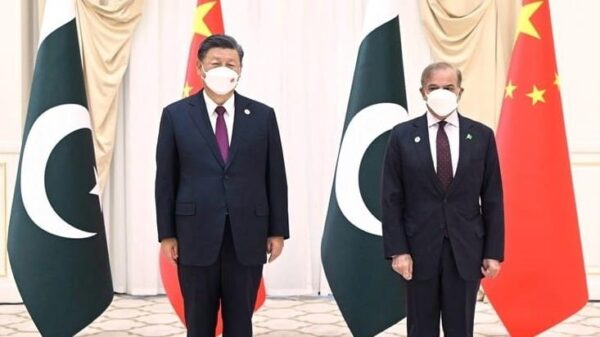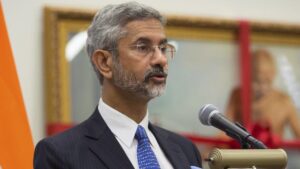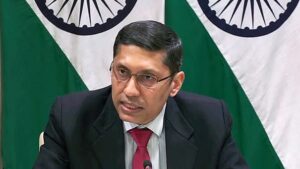
China-Pakistan Economic Corridor: The bumpy road travelled so far
External Affairs Minister S Jaishankar told the Council of Heads of Government of the Shanghai Cooperation Organisation on Tuesday that “connectivity projects should respect the sovereignty and territorial integrity of Member States and respect international law”, a reference to the so-called China-Pakistan Economic Corridor (CPEC), part of China’s Belt and Road Initiative (BRI). Pakistan’s Prime Minister Shehbaz Sharif is, meanwhile, on a visit to China — the first foreign leader to travel to the country since President Xi Jinping won a historic third term as supreme leader.
Nirupama Subramanian interviewed Andrew Small, one of the world’s most eminent scholars of Chinese foreign and economic policy, on the status of CPEC and in general, on the economic aspects of the Pakistan-China relationship.
China and Pakistan have been relatively careful about this — there haven’t been really major projects abandoned. There are “big ticket” projects that have moved ahead much more slowly than planned — such as a number of those at Gwadar — or still haven’t been finalised, such as the major railway line upgrade known as ML-1. In fact, the two sides have become somewhat more transparent about what has and hasn’t happened — the official number runs at around $25 billion now, and you can look up most of the progress reports on the individual projects.
The shorthand version is: a lot of the energy projects were completed; some of the road projects have been completed, others not; the special economic zones were pared down to a smaller number than originally envisaged and have moved very slowly; most of the projects around Gwadar are far from completion. In general, there’s been a backing away from the multi-stage, transformative plans — the projects originally agreed have largely been pushed forward, there’s just been nothing significantly new agreed over the last few years from the much bigger package that was under negotiation.
Although there are some paper agreements coming out of the Shehbaz Sharif visit, including most notably on ML-1, given the political and economic context in Pakistan now, there will still be questions about what these translate into on the ground.
Some of the energy projects were promoted very actively by the previous government and could be realised pretty quickly — the coal-fired power stations, in particular. Quite a lot did move ahead — $25 billion is no small sum — but there’s just a sense of disappointment that the whole venture adds up to less than what either side had hoped.
The special economic zones ran into obstacles quite quickly from Pakistani businesses who were concerned that China would be given special benefits that would disadvantage domestic firms. There have been issues around land allocations. There have been issues around how much financing the Pakistani side would put in for certain projects, with the Chinese side often insisting that they have skin in the game.
There were uncertainties about the economic feasibility of some of the larger projects — hydro-electric dams and railways, most notably. Gwadar is just very difficult as a location, in logistical and security terms.
These are only a few items on a long list of reasons why some parts moved forward quickly and others didn’t. But Pakistan’s overall financial situation was deteriorating by 2018, and combined with the political uncertainties for China, civil-military contention over control of CPEC, and the subsequent Chinese disputes with the PTI government under Imran Khan, CPEC never really found its feet again. Now security threats are creating major problems too.
Imran Khan seemed to see CPEC as essentially a PML-N vehicle — the line was always that he didn’t object to it in principle, just the form it was taking. The assumption was that it was corrupt, badly negotiated, and configured entirely around PML-N political priorities. In office, it seemed they found less corruption than expected — my sense is that they had anticipated a Malaysia-style big renegotiation that would see large-scale corruption revealed and big revisions to the costs, but that didn’t happen.
There are certainly broader concerns in Pakistan about being stuck so firmly in China’s camp that there is no room for manoeuvre with other partners, which has somewhat played into attitudes towards CPEC. And some concerns about debt levels too — but most Pakistani officials and politicians were confident that, given the nature of their relationship with China, they weren’t at the same risk of a “trap” as some other countries might be.
I think the two sides have broadly been drawing closer since 2014 but the period since 2018 has not been anything like as enthusiastic as that earlier phase, with CPEC one of the main points of contention.
The current total that both sides cite is $25 billion, and it was $19 billion five years ago. There are lots of other contexts where Chinese figures are very problematic but they haven’t been so far off official estimates from other independent sources when it comes to CPEC.

